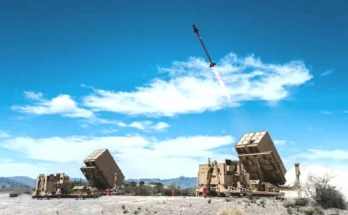By Richard Sterk, Defense Electronics Analyst.

After proving itself in operations in Afghanistan, the WIN-T is now set to begin full-rate production. Under a $219 million contract for WIN-T Increment 2 awarded by the U.S. Army to General Dynamics in June 2015, more than 300 vehicle-based network communication nodes will be produced, plus related equipment and materials. WIN-T Increment 2 (the system’s second installment) is the Army’s communications backbone, providing secure, on-the-move communications, mission command and situational awareness for commanders and their soldiers. The order allows the Army to continue fielding WIN-T Increment 2 to Army units currently scheduled to receive the system.
Warfighter Information Network-Tactical (WIN-T) delivers communication infrastructure and network components “from maneuver battalion to the theater rear boundary.” It provides C4ISR capabilities that are mobile, secure, survivable, seamless, and capable of supporting multimedia tactical information systems.
While the scope of the WIN-T program has been reduced owing to budget cuts resulting from sequestration, it is still considered “too big to fail.” Years ago, Forecast International went against industry sentiment and said there was “just too much time and money invested in WIN-T to simply walk away from it.” FI added that WIN-T would progress to completion – a projection that has been proven correct.
Financial analysis suggests that WIN-T will total up to $12.2 billion to develop and produce through 2025. WIN-T Increment 2 is expected to cost $6.2 billion, according to a U.S. GAO report issued in March 2013. This represents an increase of more than 64 percent over 2007 cost projections.
In practice, WIN-T Increment 2 is integrated into Mine Resistant Ambush Protected (MRAP), HMMWV, and Stryker vehicles. To date, four division headquarters and 12 brigade combat teams have been equipped with WIN-T Increment 2. The system has successfully served Army units supporting the Security Force Assistance Brigades in Afghanistan, replacing the fixed communications infrastructure that was dismantled when the U.S. military closed its operating bases. In other applications, as recently as last summer WIN-T provided the “communications grid” for humanitarian operations responding to the Ebola epidemic in West Africa.
The WIN-T system is produced primarily at General Dynamics’ facility in Taunton, Massachusetts.
At least 63 battalion sets are expected to be built over the life of the program.
For 50 years, Forecast International intelligence reports have been the aerospace and defense industry standard for accurate research, analysis, and projections. Our experienced analysts compile, evaluate, and present accurate data for decision makers. FI's market research reports offer concise analysis of individual programs and identify market opportunities. Each report includes a program overview, detailed statistics, recent developments and a competitive analysis, culminating in production forecasts spanning 10 or 15 years. Let our market intelligence reports be a key part of reducing uncertainties and mastering your specific market and its growth potential. Find out more at www.forecastinternational.com




